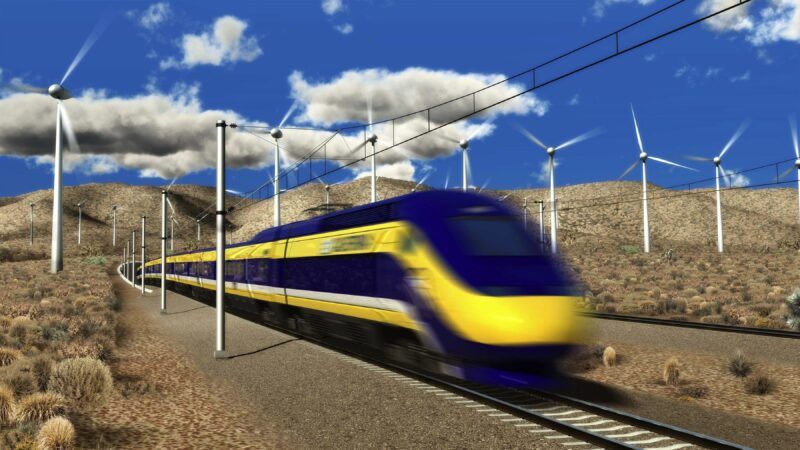California's High-Speed Rail Needs Another $100 Billion. That's a Great Reason Not To Build It.
The whole project was supposed to cost $33 billion when it was initially proposed.

When Californians were first pitched, in 2008, on the idea of a high-speed rail line connecting San Francisco and Los Angeles, the price tag was an estimated $33 billion—and about 75 percent of those costs would come from federal taxpayers or private sources, the Los Angeles Times editorial board assured its readers at the time.
On Tuesday, the project's CEO told state lawmakers in Sacramento that another $100 billion—yes, in addition to what state and federal taxpayers have already contributed—will likely be needed to finish the project. Meanwhile, there's still no timeline for when passengers will be able to take the train due to ongoing environmental reviews, Sacramento-based KCRA reported.
At the state Senate Transportation Committee hearing where High-Speed Rail Authority CEO Brian Kelly delivered the expensive news, at least one lawmaker asked the obvious question: "How do we get the public on board with something," asked state Sen. Kelly Seyarto (R–Murrieta), "that has this much of a downside funding wise?"
Kelly, of course, told lawmakers to just keep throwing money in the hole. "It feels impossible until it's not and then you grind, you do the work, you perform better and you deliver," he said.
Or you give up, walk away, and stop wasting public money—which is what California should have done a long time ago.
In an interview with Reason last year, Kelly effectively admitted that the original $33 billion estimate was unmoored from reality. It was an estimate made "before any work was done. None of the environmental work was done, none of the design work was done," he said. "It was an estimate based on paper."
But isn't that the point of making estimates? What good is an estimate done after the work is completed?
It should be obvious by now that the original low-ball estimates were meant to convince voters and state lawmakers to buy into the idea, so the sunk-cost fallacy could finish the job. If Kelly's updated estimates are correct and the project needs another $100 billion to be complete, lawmakers should pull the plug now.
And is there any good reason to believe these estimates? A New York Times investigation in 2022 found that the project was burning through $1.8 million every single day. Despite that, "according to projections widely used by engineers and project managers, the train could not be completed in this century," the paper reported.
Before advising voters to support the project back in 2008, the Los Angeles Times acknowledged that projections by Reason Foundation (the nonprofit that publishes this website) were probably right. "If voters approve Proposition 1a, it seems close to a lead-pipe cinch that the California High-Speed Rail Authority will ask for many billions more in the coming decades, and the Legislature will have to scrape up many millions of dollars in operating subsidies," the paper's editorial board wrote.
The only part of that prediction that hasn't come true is the bit about the operating subsidies—because the train still isn't close to operating. Magical thinking caused politicians and the media to back this boondoggle in the first place, and more than 15 years later, incredibly, the spell still hasn't broken.


Show Comments (38)